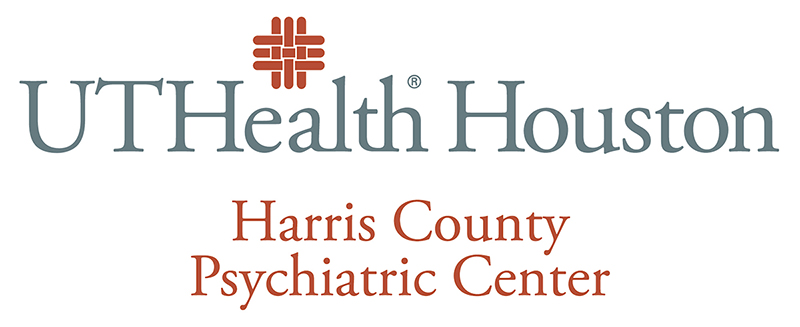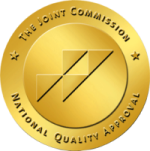UTHealth Houston Harris County Psychiatric Center
Childhood Disorders
Types of Childhood Disorders • Signs & Symptoms • Treatments
Because of the seemingly carefree nature of their lives, children have been thought not to suffer from mental and emotional disorders. However, studies have indicated that children do, in fact, suffer from disorders typically thought to occur only in adults. Learning and conduct disorders, substance abuse, conditions such as autism and depression, and suicide are common in our young population.
When children develop mental or emotional disorders, parents often blame themselves. But childhood disorders are likely caused by a combination of many factors. It is important to recognize the problem and seek treatment as soon as possible. Often these conditions can be treated effectively, allowing our children to grow into happy, productive adults.
Recognizing and understanding some of the disorders common in children is the first step.
Mood Disorders
Major depression, manic depressive disorder (also called bipolar disorder) and mania are disorders which cause change in a child's mood. Depression is considered to be the most common mental disorder. It is often mistaken for "the blues" and therefore goes untreated. Depression is caused by a number of factors, from chemical imbalances to environmental influences to genetics.
Major depression causes people to feel hopeless, exhausted and useless. More than changes in mood, major depression can cause problems with sleep, appetite, self-esteem, daily activities and physical health.
Manic depressive disorder (bipolar disorder) causes swings from deep depression to abnormal elation or "highs." Hyperactivity, scattered ideas, easy distraction, irritability and recklessness also occur in bipolar disorder during manic episodes.
Anxiety Disorders
Certain fears are common in children. But when they don't go away with time, they may be a sign of anxiety disorders. Anxiety disorders come in many forms and may be experienced differently in each person. However, their common factor is a feeling of constant terror, dread or worry beyond one's normal reactions to danger.
Phobias are irrational fears of objects or situations which cannot be overcome with reasonable explanations or actions. Not to be confused with simple childhood fears that go away with time, like a fear of the dark, phobias are so extreme that they cause major disruption to the victim's life.
Specific phobias are typically fears of particular objects or situations. The most common are fears of animals, fears of heights, fears of enclosed spaces and fears of flying.
Social phobias cause people to dread being watched or humiliated while doing something of a social nature, such as eating a meal or giving a speech, due to expectation of negative evaluation. Some people with social phobias fear and avoid any contact with others.
People with agoraphobia often have panic attacks and fear being in situations in which they cannot get help or escape. Often, this paralyzing fear causes its sufferers to remain isolated in their homes.
Separation anxiety disorder is marked by intense anxiety or panic when separated from parents or other loved ones. This disorder can be so extreme that it disrupts normal activities. Often children with separation anxiety disorder will cling to their parents or stay close wherever they go. They may refuse to play outside, spend the night with a friend, or even go on errands. This disorder is also characterized by physical ailments, such as headaches, nausea and vomiting, and even heart palpitations and dizziness. Separation anxiety can explain why many children refuse to attend school.
Conduct disorders are thought to be the single largest group of psychiatric illnesses in young people. Often beginning before teen years, the symptoms of these problems are frequently mistaken for juvenile delinquency or the turmoil of growing up. Some common behaviors include stealing, consistent lying, cruelty, deliberate destruction of property, fighting with or without weapons, or even rape.
There are many studies into the biological, psychological and sociological causes of conduct disorders, but like many other disorders, conduct disorders are probably caused by a number of factors. Conduct disorders will not go away with age, and therefore treatment is critical.
Attention-Deficit Disorder
Attention-deficit disorder (ADD) affects a child's ability to concentrate, learn and maintain a normal level of activity. Excessive activity, impatience, constant distraction, shifting from one activity to another and restless sleeping are common to ADD. But these behaviors may develop as a result of other problems, like an inability to see or hear adequately, or another physical or emotional illness. A physician should conduct a thorough medical examination to diagnose ADD and/or rule out other possible problems.
Autism
Autism is the most disabling of pervasive development disorders, a series of disorders that affect intellectual skills; responses to senses; and the ability to communicate. Autistic children fail to develop normal relationships with anyone, including parents. As infants, they may resist affection or consistently cling to someone. As they grow older, they may not seek comfort if they are hurt, and they generally like to play alone. Autistic children have difficulty communicating because they don't develop language skills. They may not use words correctly, or they may develop a language all their own.
Sometimes autistic children go through repetitive body movements. They may become preoccupied with or extremely attached to particular objects. Autistic children usually require order in their environment and usually follow strict routines.
Children who suffer from mental or emotional disorders may display one or more of the following behaviors:
- Talk of suicide or threats to others
- Prolonged feelings of intense tension or anxiety
- Sudden changes in eating and/or sleeping habits
- Atypical thoughts and speech
- Sudden and/or extreme changes in mood and behavior
- Withdrawal from friends and family
- Loss of interest in favorite activities Loss of energy
- Physical ailments that occur seemingly without cause
Mental health professionals offer a wide range of effective therapies and treatments, drawing on significant advances in procedures and technologies. Like mental illnesses in adults, childhood disorders usually require a combination of medication and supportive psychological therapies either in the hospital or on an outpatient basis.
Medication is commonly prescribed for childhood disorders and has been proved an increasingly effective tool. This type of treatment requires careful supervision by a physician and is targeted at the chemical imbalances associated with these disorders. Like any drugs, these medications may have side effects.
Psychotherapy addresses the emotional response to childhood disorders. Coping with life's stressful events is especially difficult for children with mental or emotional illness. Psychotherapists help children understand their emotions and deal with their problems in a more confident, healthy way.
Supportive therapies include a number of related activities designed to enhance treatment of childhood disorders.
The most successful treatments of medication, psychotherapy and supportive therapies are tailored to the individual child's needs under the close supervision of a psychiatrist - a physician who specializes in childhood disorders.


